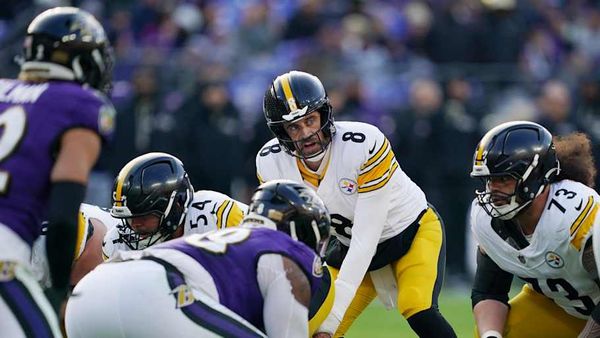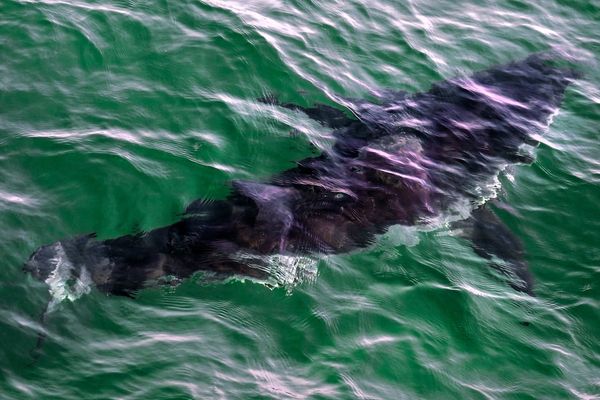
“I’m not sure why, but I feel like I could invade San Felipe”, I said to myself quietly, as I left the pre-race briefing, my body full of testosterone and mind brimming with logistics. But that’s not where this story starts.
The almost straight highway down from Mexicali to San Felipe is awash with textures, mountains that don’t seem to get closer until you’re in them, and sky-blue water from the Gulf of California. It is tranquility. Beautiful, relaxed driving in its simplest form. An almost perfect contrast to the high-octane race I was heading toward.
As I blissfully made my way toward my Airbnb, flowing to some folky tunes, I was keenly aware that in less than two days, hundreds of drivers and riders would be hanging on for dear life right next to the smoothly paved road I was on. I spent a lot of time pondering what it must be like to travel faster than I was, catching air, and simultaneously inhaling half the Baja Californian desert.
The grit and dust of it all.

So, when I arrived in San Felipe and made my way to the Polaris Factory Racing paddock after spending the past 120 miles imagining the rawness of the 6-hour race, I was taken aback by the precision.
The Paddock
An innocuous street that turned into a hard-packed dirt road led me round a corner where 80 Polaris Factory Racing team members stood, creating a sea of black t-shirt-wearers prepping like everything was on the line.

That’s because it was.
Polaris’ factory racing team is the team to beat, a target set firmly on its back. They took first and third place in the 2023 Score International championship, winning three out of the four races, including the Baja 1000. Losing to a privateer team in another RZR over a silly mistake would be borderline humiliating.
If I told you I went to Mercedes’ paddock at the Miami GP and found 80 team members working tirelessly, you’d probably nod your head in a, “Yeah that’s what I’d expect” kind of way. But to see these numbers, with this energy, prepping for the shortest and lesser-known event of the Score International Off-Road Series caught me completely off-guard. What left me speechless, though, was the machinery.

Four Gen-2 RZRs, huge trailers, endless Ford Raptors moving in and out of what I’d prefer to call the “compound”, and more than a couple of F-250s carrying machinery that made me feel like I needed to stand 6-feet back at all times. Fresh, anodized parts were everywhere, some in plastic and some getting greased up. Every machine, every part, every tool organized to a tee… again, in the middle of the desert.
It was here I got to meet all the drivers who’d already spent the previous week prerunning the 280-mile course. Their machines had covered more than 1,000 miles since they arrived, and the drivers had all chosen their lines.



To give you an idea of the detail and thought that goes behind every decision the team makes, listen to this. About 20 hours before the UTVs were due to set off, I found a team of mechanics in a frantic state, as they were trying to decide whether they’d have to angle grind all four jack points off the RZRs, sand the surface down, and re-weld the points at a slightly different angle. All of this was to stop the jack from pushing wide should a tire need to be changed in deep sand.


Bear in mind, that the current setup wouldn’t prevent a tire change, but this alteration might save them a few seconds. In the team’s mind, it’s the compounding effect of actions like these that win or lose races.

If I had any notion that you could just hop in a side-by-side for a desert race and “give it a go” ahead of San Felipe, it was now long gone. At least not if you want to touch Polaris’ Factory Team, as was made unquestionably clear to me the next night.
The Brief of All Briefs
Like you, I had no idea what a pre-race brief consisted of for one of the “shortest” desert races in Baja. And maybe I still don’t because I can’t imagine any other team doing it with Polaris’ precision.
Everybody from CAD designers, engineers, first-aid responders, mechanics, and of course, the drivers, attend. By the end, anyone who listened knew the race layout to the minute, at least so long as everything went to plan.

This brief coordinated four “direct chase” vehicles in the form of Ford Raptors, each of which had been designated an RZR to stay as close to as possible and provide assistance if needed. Then there were four more “general chase” F-250s, which carried fuel and heavy-duty equipment should any of the drivers encounter trouble in one of the many noted high-risk sections. There was even another Gen-1 RZR with mostly interchangeable parts that’d be lying in wait at the only mandatory pit stop in case the team needed a faster option to reach a driver.



More comms systems than I could count, codenames, how to communicate so you don’t overwhelm the team, what to do if any combination of things happens at the refueling pit stop at mile 150, and even how many times the new helicopter lands to refuel was delivered. The information was relentless, precise, and almost militant in its delivery. Until it wasn’t.
As I sat there feeling ready to take over San Felipe, the Director of Race Operations finished his part. But before we wrapped up, Alex Scheuerell, Polaris Factory Racing Technical Director, took the floor to remind everyone that “We’re a family”, but he wasn’t just referring to the team, he was talking about every racer. That final note was that if you see another racer who needs help, that becomes your priority.
It was a beautifully wholesome note to bring a room of race junkies, jacked up on logistics and tacos back down to earth, and remind everybody that this tiny desert town is here because they all love the same thing, just like you and I.



Speed Meets Precision In The Pits
Nowhere did the tension culminate more than the one mandatory pit stop.
If all things are going well, the pit crew is the most important team once the race starts. These are the only team members who interact with the UTVs during the race outside of the drivers. They know they have to perform on the day and know should they make a mistake during their 30-second window, it could cost the driver his place and a win for the team.
But you wouldn’t know it from looking at this picture.

The day isn’t designed for the team to be in time with the drivers, it’s designed for them to be way ahead of the drivers. So once the pit station was set up, and it was hours before the first UTV came in, there was time to chill, chat, and watch trophy trucks burn through my bank balance in gasoline in less than 30 seconds.

And then you see the helicopter. A driver is close.
It comes in over the radio, and we hear from the direct chase truck driver, “Brock is 20 miles out. 15 miles. 10 miles. Five miles. One mile out, guys! 30 seconds!”. There was almost a direct correlation between how far the first RZR was away from the pits and my heart rate. Each mile the driver traveled added at least one BPM on my Garmin. And I don’t believe it’s because I was green.
The mode shifted. The tranquil desert was as far as we could see, but a bubble of tense, focused energy surrounded the pit stop. They suited up and started stretching, repeating the movements they’d need to perform so they became second nature, and the fuel filler dawned his flame retardant apron. Then we waited and listened for an engine note we hadn’t heard that day, the distinct high-pitched growl of a naturally aspirated 2-liter inline-four.
Thankfully, none of the UTVs had unforeseen problems, meaning they were in, refueled, inspected, and back on the track in less than 30 seconds. If there was a slip-up at the pits, I didn’t see it. Nor was it consequential to the race results.

Mercedes' F1 team needs to take notes.
No Maverick Maneuvers
A lot of the fun engineering a racer is finding the gray area of the parameters and bending, but not breaking the rules. But that’s not what happened here.
The ethos surrounding the Polaris Factory Racing team isn’t about pulling Maverick maneuvers. It’s speed, consistency, and precision. The team was confident that they had the vehicle, drivers, and support crew to take any race.
And they more than proved that on the day.



It was podium domination, with first, second, and third, and the three vehicles finishing within almost two minutes of each other… after 280 miles of off-road racing. Unfortunately, though, Max Eddy Jr. missed one of his markers by a few feet, which relegated him to fifth place after the team got to line up for what seemed to be a sweep.
But, if anything, that just gives this precision-driven bunch another area to perfect before the Baja 400, for which they have just eight weeks to prepare.







